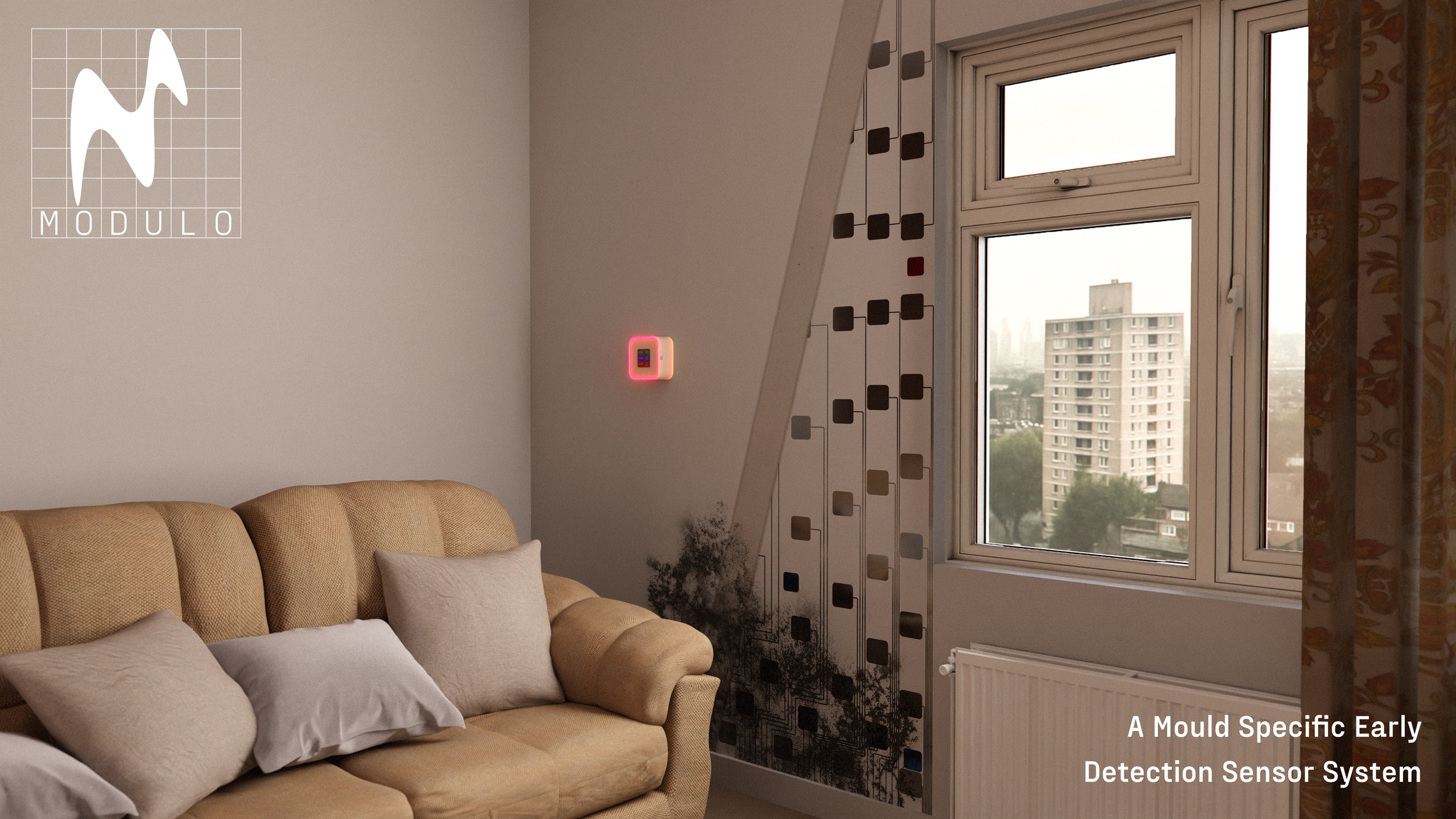Modulo
Modulo is a novel sensor system that detects mould growth early, before it can become a health hazard. It tracks and correlates mould growth with temperature and humidity, pinpointing mould in real-time. This enables timely action, helping occupants protect their health and homes.
Year: 2024
Concept & Design: Jeremie Kofman, Vishal Mehta, Yiran Lin, Zachary Berry
Discipline: Human Centred Design, Behaviour Change & Material Science
My contributions include ideation, prototyping, materials research, behaviour change, design writing, storytelling, and graphic design.
Project designed as part of MA/MSc Innovation Design Engineering | Royal College of Art & Imperial College London
Watch the full Modulo story above. This film explains the complex problem the team faced, and the steps we took in designing a first of it’s kind mould detection sensor.
Damp and mould are not new issues, especially in London, which has some of the oldest housing stock in the world. The photographs above were taken during a team visit to a void property in Islington, which was awaiting full renovation due to severe mould and damp conditions.
6.5 million UK households are affected by damp and mould, with a quarter million in the council-owned sector. Mould poses severe health risks and can damage the building fabric. This is especially prevalent in social housing, which can be poorly insulated and ventilated, creating ideal conditions for mould to thrive. Additionally, mould can often be hidden behind furniture or flooring, prolonging the removal process and further exacerbating the health risks.
We began prototyping a sensor which could be easily retrofitted in homes, detecting mould growth before it became a health hazard. Our design uses a grid of capacitors on an adhesive sheet, which, unlike other sensors on the market, directly detects mould growth by monitoring capacitance changes over time. The grid design provides another innovation: the ability to spatially pinpoint mould, which can dramatically speed up the removal process. To create an effective sensor, we prototyped by growing mould on various materials in a temperature and humidity-controlled environment, and regularly logging capacitance values with two conductive plates and an Arduino.
The central challenge for our sensor was to differentiate mould growth from the natural capacitance changes caused by fluctuating humidity. We ran a one-week experiment, growing mould on bread at a consistently high humidity, and saw changes in capacitance which matched the phases of mould growth, from exponential growth, plateu, and then a decay as the mould ran out of nutrients. This process creates a unique capacitance ‘signature’ which can only be created by mould.
So, how is the Modulo sensor used in a real home? First, during a renovation, the sensor sheet can be easily adhered to a specified number of walls, just like wallpaper. The Modulo Box, which fits discreetly on a skirting board, powers the sensor with batteries and sends raw capacitance readings to the cloud every 30 minutes. A specially designed user interface, called the Interaction Cube, turns red if mould is detected, and blue to motivate the tenant to improve ventilation. Finally, for landlords, we created a web app to view their properties' real-time status remotely.
The Modulo team is working with a conductive ink and printed graphics manufacturer to create a fully functioning prototype with screen printing.
Exhibitions
Royal Society, London, 2025
Openhouse, London, 2025





















